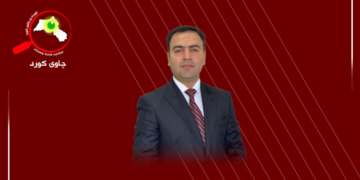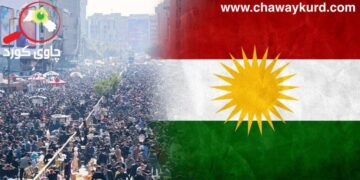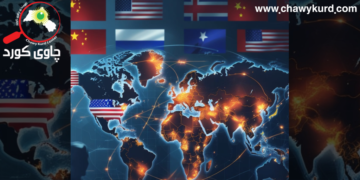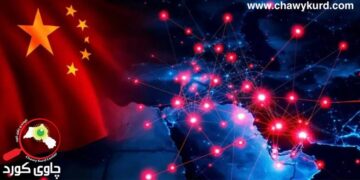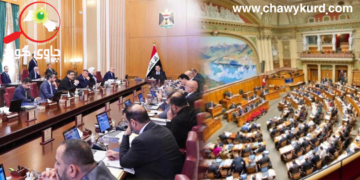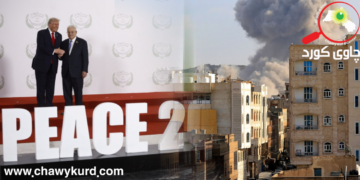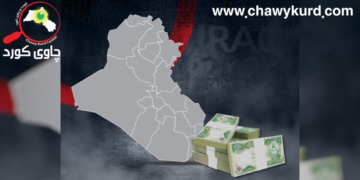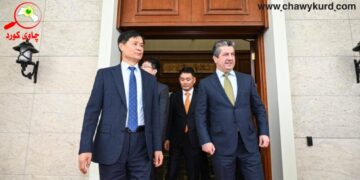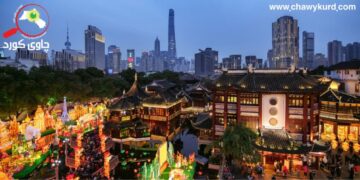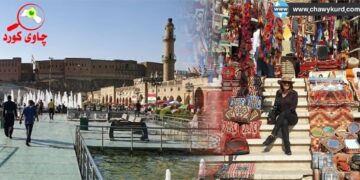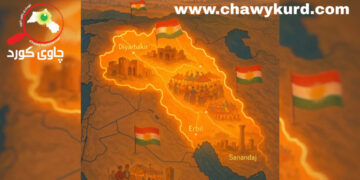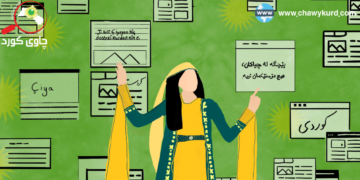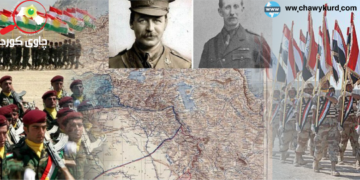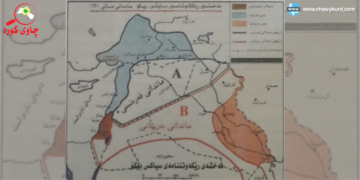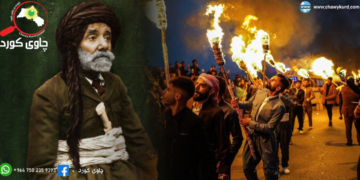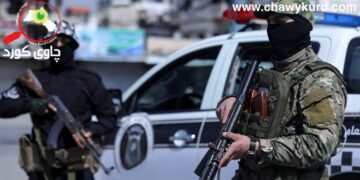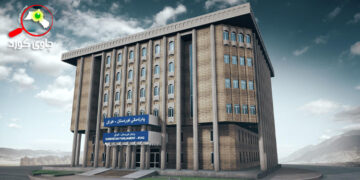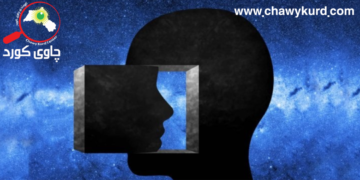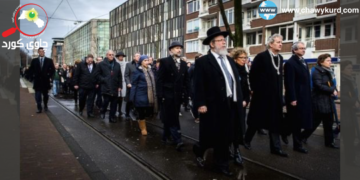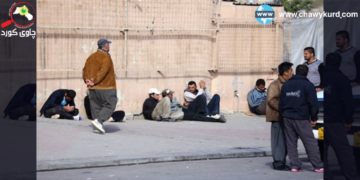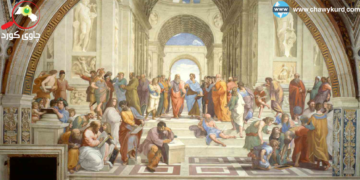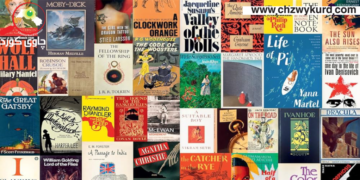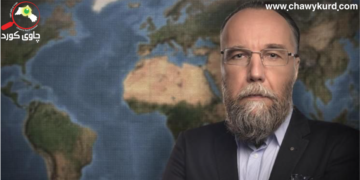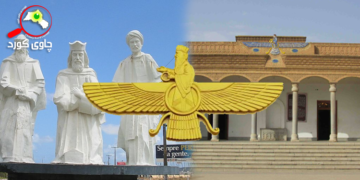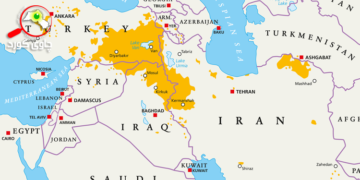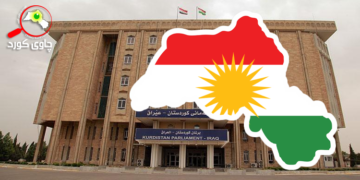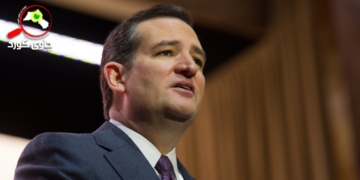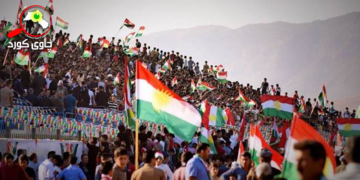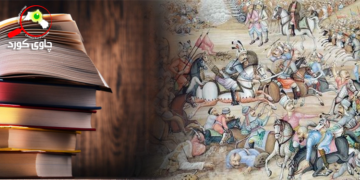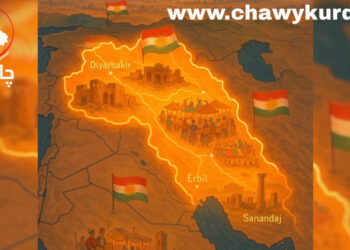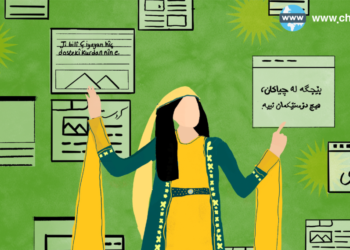THE OTHER NAHDAH: THE BEDIRXANS, THE MILLlS AND THE TRIBAL ROOTS OF KURDISH NATIONALISM IN SYRIA
Introduction
The study of Kurdish nationalism and its history in Syria has been much impelled by current affairs in the past years, from the emergence of Iraq’s Kurds as a quasi-independent polity in the Middle East, to the significant relaxation of restrictions on Kurdish language and press in Turkey, to the new push for political liberalization in Syria itself. Both in the region and among the important émigré communities of Sweden and Germany, there has been an unprecedented output of popular magazines, memoirs, and private documents pertaining to Kurdish culture and history, while a growing body of specialized research is today contributing to carving a place for Kurdish studies in western academia. Much of this literary production has understandably focused on the icons of Kurdish national identity construction in modern times, on the writers, activists and political leaders who personify the epic quest for the rights and recognition of an entire people. In this respect, Syria has had a disproportionately prominent place in the history of Kurdish nationalism, playing host, under French mandatory rule, to the literary and intellectual movement that would standardize the Kurmanci Kurdish language and establish the struggle for Kurdish self-determination as a key problem of interstate politics in the region. In particular, the pioneering journalistic activities of the Bedirxan brothers in Damascus and Beirut, and the educational and social welfare programs initiated with other Kurdish leaders under the auspices of the Xwebun committee, mark Syria and Lebanon as the motherland not only of the Arabic literary revival of the 19th century, but also of the equally portentous movement that can rightly be called the Kurdish nahdah in the 20th.
The concentration by historians on the intellectual luminaries of the Kurdish renaissance, however, has perhaps too one-sidedly emphasized the trans-national character of the Kurdish struggle in Syria, with the Bedirxans appearing as political émigrés who might as well be based in Paris or Lausanne and the Xwebun committee as a government in exile whose real interests lie essentially across theborder in Turkey and Iraq. The aim of this contribution is to collate the Bedirxan brothers’ initiatives with the role played by less well-known but more locally rooted Kurdish activists in mandate Syria, and to suggest that not all Syrian Kurds necessarily embraced Xwebun’s internationalist orientation or its goal of an independent Kurdish state. The first section will treat the origins of the Be dirxans and their contribution to the rise of Kurmanci-language publishing in Syria, but will make special reference to lesser known members of the family as well as to other Xwebun associates who understood themselves primarily as officers of the state in Syria. The second section will examine the history of the Mil li confederation, the Kurdish tribal group with the arguably deepest political roots in geographic Syria, and their ambivalent relationship to the Kurdish movement following the First World War. By directing our attention toward the more obscure local and tribal roots of Kurdish activism in Syria, it becomes possible to see that the movement was not uniformly advantaged by the French mandatory power but, on the contrary, in many cases joined forces with other Syrian nationalists in the anti-colonial struggle.
I.The Botan Emirate, 1514-1847
The Bedirxan brothers who were to play such a pivotal role in the articulation of a Kurdish national identity in Damascus and Beirut were scions of the semi-autonomous emirate that ruled Cizre (Gazlrat Ibn cUmar) in Botan, just across the Tigris from what is today Syria, for much of the Ottoman period. Like several other principalities of Ottoman Kurdistan, the Cizre emirate was formed after the leading feudal families in the region swore fealty to the sultanate, following the defeat of the Shiite Safavids at Caldiran in 1514, in return for their recognition as local hereditary governors. The Bedirxans claim descent from the first emirs of Botan, the Azizan clan, relatives of the Serefxans of Bedlis who were the engineers- as well as the only contemporary historiographers-of this Otto man-Kurdish rapprochement. Beyond that there has actually been very little historical investigation of the emirates (beglik or hukiimet), whose precise status and territorial delimitation, as Hakan Ozoglu has recently shown, fluctuated over time in accordance with internal power struggles as well as the Ottoman state’s periodic attempts to impose more direct control .2 Chancery documents from the 16th century record in some detail the career of “Bedir Beg”, quite likely a direct forebear of the famous 19th-century emir Bedir H(x)an Beg for whom the family is known, as “ruler” (hakim) of Cizre. Throughout the 1570’s, this Bedir Beg was called upon to assist in putting down refractory tribes in the region as well to join the imperial campaigns against Iran; by 1578, however, his son and presumably at this point his successor, seyyid Mihemed Beg, was being reprimanded for oppressing villages in his area of fiscal control.3 There is little that distinguishes the emirate in later decades, when in any event it formed part of the Veyalet of Diyarbekir. If there was an actual tribe known as the Azizan, they are barely accounted for in Ottoman administrative records, even at a time when the entire region came within the purview of a massive imperial program of tribal settlement and relocation in the late 17th and 18th century.4 It is likely that the rule of the Azizan emirs did not extend very far beyond Cizre into Kurdish tribal areas.
The Botan emirate is brought back into the full light of history by the Ottoman state’s centralization policies in the 19th century. In 1834 the Ottomans under Mehmed Resid Pasa began a campaign to reincorporate Kurdistan as a prelude to reconquering Syria from Mehmed Ali of Egypt, first eliminating the Bahdinan and Soran emirates. Cizre too was taken in 1838, but Ottoman prestige in the area suffered a decisive blow with the defeat against the Egyptians at Nizib (near Birecik) the following year. From then on, Bedir Han Beg was able to create a veritable Kurdish tribal monarchy in south-eastern Anatolia. Foreign missionary reports in particular dwell on his coercion of the region’s Nestorians, who like Christians elsewhere in the Empire were becoming a cause Celebre in Europe. Though the Botan emirate would later be portrayed as the germ of a Kurdish national entity, it was as much Bedir Han’s autarchy vis-a-vis the central administration as western political pressure that caused the Ottomans to re duce it by force in 1847. Bedir Han Beg was honorably exiled to Crete and then allowed to return to Istanbul with the official rank of mirmiran in 1858. In 1865 he and his large immediate family moved to Damascus on an Ottoman pension, where he died a few years later.
The Bedirxans in Syria
Over the next decades, Syria served as something of the Bedirxans’ base of op erations as they traversed and in many ways shaped the various stages of early Kurdish nationalism. Emin Ali Bedirxan, Bedir Han Begs most prominent son, briefly helped raise a Kurdish contingent against the Russians in the 1877-78 war before returning to Damascus, but then joined his brother Miqdad Midhat in a revolt against Ottoman forces around 1889. He was bought off with a midlevel provincial office, and then exiled to Syria (Acre) once more for his purported role in a 1906 palace plot against Abdulhamid. Two years later he was back in Istanbul, where the family owned a summer mansion on Buyukada, and became a founding member of the Kurdistan Teavun ve Terakki Cemiyeti, the Young Turk inspired “Society for Mutual Aid and Progress” that led the call for a Kurdish cultural awakening under Ottoman dominion. The radicalization of Kurdish national thought would devolve upon a younger generation of intellectuals, chief among them his three sons Sureya, Celadet and Kamran. They and other Istanbul-based activists and newspaper writers worked for the recognition of Kurdish rights within a progressive Turkish state right until 1919, when the start of Mustafa Kemal’s war of liberation against the allied occupation forces heralded the ascendancy of a militant Turkish ethnic nationalism. By then Sureya had already gone to join their uncle Miqdad to publish the first Kurdish newspaper, Kurdistan, in Cairo. Celadet and Kamran, on the other hand, set out from Aleppo with British army major E.M. Noel, the “Kurdish Col. Lawrence,” to see about establishing a British client state in south-central and eastern Anatolia.7 With the unmasking and expulsion of the Noel mission by the Kemalists in September 1919, however, the two brothers had little choice but to return to Syria indefinitely to continue their propaganda effort in favor of Kurdish nationhood.
Hawar (“The Cry for Help”), the first Kurdish-language newspaper to adopt use of the Latin alphabet, represents the Bedirxans’ most important contribution to the Kurdish nahdah. Launched in Damascus in 1932, it was discontinued in termittently over the next years but received renewed support from the French authorities during World War II and appeared again regularly, along with its illustrated supplement Ronahi (“Light”), between 1941 and 1943. Its siblings Roja Nu (“New Day”) and Ster (“Star”) were published by Kamran in Beirut from 1943 to 1946. Together with the Kurdish-French dictionary that the Bedir xans compiled with the aid of the French orientalists and mandate officers Roger Lescot and Pierre Rondot, these publications served to standardize the grammar and writing of modern Kurmanci Kurdish, and provided an important common reference for educated Kurds throughout the region. Their concern was not in any way with Kurds and Kurdish society in Syria. Hawar’s debut responded to the radicalization of ethnic nationalism in Turkey and in particular the promulgation of the Turkish History Thesis in 1932, and it served the Bedirxans to in turn expound the Kurds’ Aryan identity and their dissociation from the Turkic race. As per order of the French authorities, the newspapers were otherwise apolitical in content and in any case incomprehensible to many Kurds especially in north-western Syria inasmuch as they consecrated the Bedirxans’ native Botani as the one standard dialect of Kurmanci Kurdish. Celadet and Kamran’s stewarding of the Kurdish nahdah in Syria ultimately aimed to build up and concretize their social capital within the nascent pan-Kurdish international, an important first step in reclaiming the political role the family had enjoyed as leaders of a semi-autonomous Kurdish principality in the past.
Celadet and Kamran had both studied in Germany; Kamran spent much of his time in Paris and in fact moved there (teaching at the INALCO) after Syria was granted independence in 1946. Their principal stake in Syria was in seigneurial lands in the Gazirah that were once attached to the Botan emirate, which they hoped to re-develop with the help of French investors.10 Other members of the Bedirxan family, however, put down deeper roots in the country. Though less manifest and certainly less written about today, their involvement with local society, it may be argued, played an equally important part in the development of a Syrian Kurdish identity. Bedri Pasa, for example, was among Bedir Han Begs eldest sons and heir-apparent to the emirate. Descended on his mother’s side from the Yezidi Anqosi tribe, Bedri PaSha raised 3000 troops in Syria for the Ottomans’ 1877-78 war effort. He too was deported back to Syria for his role in a subsequent Anatolian revolt, but was awarded a district governorship in the trou blesome Hawran region on account of his experience in tribal matters. Later he held offices in Tripoli and in Hama, both of which still had important Kurdish populations at the time.11 Other relatives were appointed to Qunaytra, Darcah, Jerusalem, Hasbaya and Hisn al-Akrad in the 1880’s. The memoirs of Bedri’s nephew (and son-in-law) Mihemed Salih Bedirxan, whose father served in the tobacco regie in Latakia, Suwayda and finally Nabak, provide a richly detailed picture of a childhood spent in the Suq Sarugah and Qaymariyyah quarters of Damascus and of the family’s Kurdish acquaintances there. Later, on business for his uncle among the Druze in the Hawran or the Shiites in Baalbek, Salih would be accompanied in almost classic Ottoman style by a mounted force of Kurdish retainers. Lastly, Mihemed’s daughter Rewsen became the best-known advocate of Kurdish culture in the country. A member of the Syrian Women’s Union and delegate at the 1944 Women’s World Congress in Cairo, Rewsen mar ried Celadet Bedirxan and shared actively in his life’s work. After his death she continued to write on Kurdish issues and participate in international conferences in addition to working as a schoolteacher. In 1956 she helped found the learning and mutual aid society Komela Zanisti u Alikariya in Aleppo, and she remained an active participant in Kurdish women’s leagues in Syria and Iraq until her death in 1992.
Xwebun and its Discontents
The dichotomy between internationalist and localist approaches to Kurdish emancipation in Syria was reflected within the Xwebun committee. Xwebun (“Being oneself; Identity”), which brought together the Bedirxans and other leading Kurdish nationalists after the collapse of the ?ex Said rebellion, was founded in Beirut in 1927 in order to prepare the larger and more systematic revolt against Turkish rule at Agn Dag (Ararat) in 1930. It worked closely with the Armenian separatist organisation Dashnak but soon ran afoul of the French mandate authorities, who could not allow the struggle for independence in Anatolia to become linked with domestic Kurdish issues in Syria. The Bedirxan brothers thus withdrew from the political leadership of Xwebun, preferring to cultivate French support for their publications which, unsurprisingly, never mention Syrian lands as a part of Kurdistan. They personally were prohibited by the French from travel ing east of the Euphrates in the GazTrah.14 Other members of Xwebun, however, did become actively involved in politics in Syria. QadriCan, perhaps the best known Kurdish poet of his generation, fled to Syria from Turkey around 1928. After learning Arabic and attending college in Salamyah, he was appointed as a teacher in Antioch, where he came into contact with the Arab nationalist movement, then in Qamisli and finally in the Hayy al-Akrad (Kurdish Quarter; today Rukn al-DIn) in Damascus. He was a regular contributor to Hawar and maintained links to Kurdish nationalists in Iraq, but politically he aligned himself in 1944 with the Syrian Communist Party. He spent several years in Mezze prison, notably from 1959 to 1961, at the time of the United Arab Republic. And Eli Axa Zilfo, the son of a sheep exporter from Amed/Diyarbekir, became involved in rebel activities against the French in Damascus in 1925 before being arrested and imprisoned in Turkey for his part in a Kurdish insurrection there. He sub sequently joined Xwebun and became a leading “boss” (zaclm) in the Hayy al Akrad, using his tribal prestige both to promote the Kurdish Mutual Aid Society and to continue fomenting revolt against the French.
Ultimately, most Kurds in Syria saw resistance against the Kemalists and resis tance against French imperialism in the same terms. It is true that the Kurdish landed notable and anti-French resistance leader Ibrahim Hanano only rallied to the Syrian national cause after his drive to restore Ottoman sovereignty in Aleppo with the help of Turkish defence committees in 1921 had failed. The largely rural population of the Gazlrah and the Hayy al-Akrad, however, did not share Hanano’s and the Bedirxans’ Young Turk background and modernist ideals. It is perhaps telling that among a group of 13 rebels from the Hayy al-Akrad executed by France in 1926 for their role in the “Great Syrian Revolt,” half were members of the Milli, Reswan, Berazi and other tribes long established in northern Syria.The Millis in particular remained as the dominant Kurdish tribal grouping on Syr ian soil after World War I, the extent of their influence being indicated by the in stitution of a separate “Societe de Bienfaisance de la tribu Milliye” in the Hayy al Akrad during the French mandate. It is to their historic presence and contribution to the development of a Kurdish identity in Syria that we turn next.
II.Ottoman Tribal Politics in Northern Syria
Many of the Anatolian tribes settled in Syria after 1925 supported a Kurdish “tribal nationalism” and at the same time actively collaborated with the French regime. Hajo Axa of the Heverkan, to cite the best-known example, joined Xwe bun after fleeing the Tur cAbdIn in 1926, but like the Bedirxans soon devoted his attention to cultural affairs and especially to developing his extensive new landholdings in the Gazlrah and cultivating French patronage.20 By contrast, the Milli Kurds had much deeper historical roots in the area and consequently, it may be argued, a more ambivalent relationship to both the French mandate and the internationalist Kurdish cause. The Milli (Millo, Milan) are mentioned in Ottoman sources from the 16th century onward, when they controlled the southern piedmont of the Karaca Dag and were frequently assigned to the voyvodahk (district governorship) of nearby Mardin and the Khabur valley, part of the province of Diyarbekir.21 Beginning in the late 17th century they came under the purview of the Empire’s tribal sedentarization project, and were forced to settle first around Amed and then in the eyalet of Raqqa. They frequently quit the lands assigned to them to return north to better pastures, however, and quickly acquired a reputation as being among the most rebellious tribes in the Raqqa sedentarization program (Rakka iskam). In 1723, for example, a group of Milli Kurds was accused of ruining gardens and stealing livestock in Maras after having absconded from Raqqa to resume nomadism; in 1746 another group from Urfa robbed the imam of Ergani of 300 sheep, sparking an official protest in Istanbul. At other times the Millis taxed and otherwise oppressed tribes coming south to Raqqa for winter grazing.
Around the middle of the century the Ottoman state attempted to co-opt the Millis’ tribal leaders in Raqqa by recognizing them as iskanbast or chief of sedentarization. The iskan basis were given authority to tax their own followers as well as to control other tribes in the region, but even this did not always prevent them from leaving their settlement areas and raiding towns and villages where they saw fit. With the increasing breakdown of central authority in the provinces the Millis also began to attract the state’s attention in a different manner. In 1758, iskan bast Mehmud bin Keles Evdo was accused of illegally entering the Khabur valley, confiscating grain supplies at Magdal (just to the west of present-day al-Hasakah) and disarming and subjugating the local tribes. In addition to rebuilding an old castle on the Khabur, he purportedly intended to dam the river, establish a series of farms and villages and seize the entire area for the Milli confederation.23 This attempt to set up an autonomous principality was quashed by the Ottomans, but it marked the beginning of the Millis’ political ascendancy in what is now north eastern Syria. Mehmud’s son Timur, whom the Ottomans recognized as iskan bast despite his constant transgressions in the Urfa area, effectively seized power in the province while the legitimate authorities were away on campaign in 1774; two years later the Porte had to supplicate him to assist the war effort against Karim Han Zand of Iran.24 His capture and execution was still ordered repeatedly over the next two decades but Timur now enjoyed the backing of a powerful new ally, the Mamluk governorate of Baghdad. In 1800 the Ottomans, marking the regression of their own power in the empire’s periphery, formally appointed the Mill! chieftain as vezir and governor of the province of Raqqa.
The Millis and the End of Empire
Timur Milli’s career as an Ottoman was to be short and undistinguished. He did lend support to a punitive campaign led by the governor of Baghdad against tribes in the Gazlrah in 1802, but he was also the object of numerous com plaints of oppression and misgovernment back in Raqqa and Urfa. He was dis missed in 1803, returned to the Khabur district and immediately set about build ing a new coalition of tribes to help him regain office.26 He died not long after, but it is oddly this final act of rebellion, rather than his family’s long ascent to power in the first place, that became enshrined as the founding myth of the Milli confederation. Modern historians of Syria’s tribes portray Timur not as a parvenue iskan bast but as an Ottoman nobleman and career functionary who fled to Anatolia and constituted a vast principality of Kurdish and Arab tribes? the supposedly eponymous Hezar Millet or “thousand nations”? after his fall from grace.27 In fact this myth, far from reflecting a genuine oral tradition, was that served the English traveler J.S. Buckingham on his visit with Timur’s son and successor Eyyub Beg in 1816, and whose report was then cited in Stephen Lon grigg’s history of Iraq and subsequently in Mihemed Emin Zeki’s seminal two volume “History of the Kurds and Kurdistan” in 1931.28 In any event the Mill! confederation stood to benefit more from the continuing disintegration of Ot toman imperial authority than as servitors of the state. In the first years of the 19th century the estimated 50,000 tents and 20,000 horsemen under Eyyub’s command formed the last bulwark against the even more powerful Wahhabi allied cAnaza bedouin coming northward; in 1818, the Ottoman authorities in central and southern Syria were in turn warning that the Millis with their Berazi Kurd allies were taking over the steppe regions around Hama.
The invasion and occupation of Ottoman Syria by Ibrahim Pasa of Egypt in 1831 left the confederation literally caught between the waning empire and a vital new centralized state. At first Eyyub Beg sided with the Egyptians, obsequiously pledging loyalty to Ibrahim and Mehmed Ali in return for his continued recognition as tribal lord, but he failed to win their trust and soon complained that the new administration was restricting his tribes from moving about their traditional summering grounds in Raqqa. A rift occurred within the Milli tribe itself after which Eyyub again switched allegiances, lending his support to the Ottomans as they retook control of the Euphrates’ east bank in 1834, only to fall victim, like the Bedirxans, to Mehmed Resid Pasa’s subsequent campaign to reduce the region’s Kurdish emirates by force. During the Tanzimat reform period the Millis’ leaders were repeatedly harassed and imprisoned by the state authorities and saw many of their lands in the Gazirah seized by their old enemies among the Tayy and especially the Sammar bedouin. Details of the Millis’ history in this time are sketchy and often contradictory; their decline in number to only a few hundred tents, however, bears witness to the increasing efficacy of modern state control over the empire’s rural and tribal periphery.
It was sultan Abdiilhamid II’s return to tribal clientelism as a basis for provincial administration that set the stage for the Millis’ resurgence and the con solidation of their presence in northern Syria. Eyyub Beg’s great-grandson Ibra him, who succeeded to the chieftaincy in 1877, understood better than his prede cessors (or contemporaries such as the Bedirxans) how to curry favour at the imperial palace while at the same time impressing the Europeans with his exemplary treatment of the region’s Christian populations. The result was that the Millis’ time-honored banditry was now not only winked at in Istanbul, but also earned Ibrahim “Pasa” the command over five Hamidiye regiments in south-east Anatolia. With some 6,000 of his own men issued with government arms, Ibra him was able, through a combination of force and patronage, to completely sub jugate the Kiki and Karakeci Kurds and the Qays and Tayy Arabs and even to absorb parts of the traditionally hostile Sammar into the Milli confederation. He could thus provide an unprecedented level of security for the region’s lucrative caravan trade, while also averting his tribes’ implication in the Armenian massacres at the end of the century. By 1901, western observers spoke admiringly of the “little empire” that Ibrahim Pasa administered from his fortress at Viransehir and that stretched south all the way into the Gabal cAbd al-cAziz massif.
The end came quickly for Ibrahim Pasa’s empire, though, when the Young Turk revolution severed his privileged ties to Istanbul and he became a primary target of the newly restored progressivists’ drive to reassert direct control over the eastern periphery. Already at the end of 1908, the confederation had effectively been dispersed and Ibrahim Pasa died while on flight from government troops near al-Hasakah. The Millis were harshly repressed by the CUP regime over the next years and played no significant role in World War I, though in 1919 they did earn the thanks of the Ottoman sultanate, one last time, for their stalwart defence of the Viransehir region against the invading allied forces. The new in ternational boundary decided upon by the French and the Kemalist government at Ankara in October 1921 was to cut straight through this region, leaving a large chunk of the Millis’ ancestral lands within the mandated territory of Syria.





